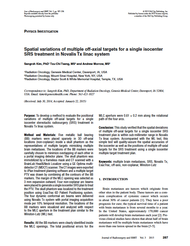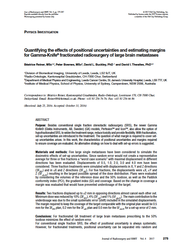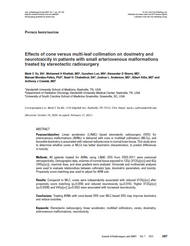- Home
- Journal Contents Downloads
- JRSBRT Downloads
- JRSBRT 6.4, p. 287-294
Product Description
Secondary malignancy following stereotactic radiosurgery for benign neurologic disease: A cohort study and review of the literature
Alexander D. Sherry, Brian Bingham, Ellen Kim, Meredith Monsour, Guozhen Luo, Albert Attia, Lola B. Chambless and Anthony J. Cmelak
Radiation-associated malignancy and malignant transformation are risks associated with stereotactic radiosurgery (SRS); however, incidence is uncertain. The purpose of our study is to present the rate of radiation-associated malignancy and malignant transformation at our institution. After IRB approval, we undertook a retrospective cohort study evaluating patients treated with Gamma Knife® or linac-based SRS between 1990 and 2014 for benign CNS pathology with at least 5 years of clinical follow-up. Risk of transformation was calculated using the Kaplan-Meier method. A total of 273 patients met selection criteria. Median clinical follow-up after SRS was 11 years (range 5-27). Over 3,216 patient-years following SRS, we found zero cases of radiation-associated malignancy and two cases of radiation-associated malignant transformation for a crude rate of 0.73% or case rate of 0.62 per 1,000 patient-years. The Kaplan-Meier risk of malignant transformation at 5, 10, and 15 years was 0.4% (95% CI 0.05% - 2.6%). These data support the continued use of SRS for benign intracranial pathology without significant concern for secondary malignancy.
Keywords: Malignant transformation, radiation-induced malignancy, secondary malignant neoplasm, radiation-associated mutagenesis, radiation sequelae
After payment has been processed for your order of a digital copy (PDF) of this article, you will see a download link on your completed order page and also receive an email containing a download link. The links, which will enable you to download one copy of the article, will expire after 24 hours.
 Loading... Please wait...
Loading... Please wait...








